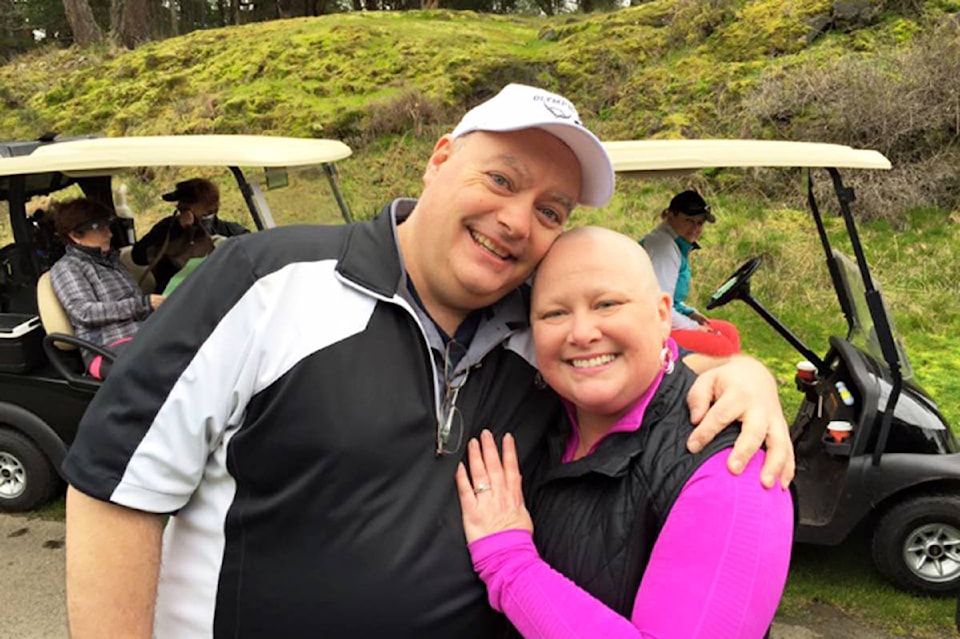Lori Hamstra knew something wasn’t right despite being told she just had an infection. And she was right. Two years ago, Hamstra was diagnosed with metastatic and inflammatory breast cancers.
“I’ve kind of accepted that there is no cure,” Hamstra said. “It is treatable but it’s not curable so what that means is I’ll be doing treatment for the rest of my life.”
Metastatic breast cancer is usually classified as stage four breast cancer. It also spreads to other parts of the body including the lungs, liver, bones, and brain.
Inflammatory breast cancer is a rare and aggressive disease in which cancer cells block lymph vessels in the skin of the breast. It’s called inflammatory because the breast often looks swollen and red, or inflamed. Inflammatory breast cancer is also one of the deadliest forms of breast cancer.
Hamstra undergoes chemotherapy every three weeks and also has a monthly bone infusion as well as shots each month to shut down estrogen. Her cancer has spread to her left lung, her lymph nodes, and back.
“The inflammatory is the one that is really rare,” she said. “Only between one and four per cent get it. Not many people know about it which also means not a lot of funding is going towards it. You can’t actually be diagnosed with it until you’re stage three. When I originally was diagnosed, I was stage four.”
RELATED: Financial struggles during treatment almost as bad as cancer warns patient
October is breast cancer awareness month and while many people are accustom to associating a lump with breast cancer, Hamstra wants to make people aware that it is more than that. Her cancer was found in the breast tissue with no lump present and at first, she too didn’t think it was serious because she didn’t feel one.
“Everything that is pushing towards breast cancer is ‘you find a lump, you go in,’” she said. “There was no lump so it was the redness.”
Hamstra noticed her left breast was red and also was somewhat hot. She said she attributed it with pain she usually went through monthly. “My right breast went back to normal, but my left one didn’t,” she said. “The next morning, I went to a walk-in clinic because my family doctor didn’t work on Fridays. You’ll see so many cases misdiagnosed because doctors have never seen it before.”
And that is exactly what Hamstra experienced. The doctor she saw said it was an infection and gave her antibiotics in hopes of clearing it up. “I did that for the weekend and it didn’t go away,” she explained. “So Monday morning I called my family doctor and she said to come in right away. I went in and she sent me straight for a mammogram and did everything all at once including a mammogram, a biopsy and ultrasound and three days later I got the call from my family doctor.”
Her biopsy on the tissue revealed the cancer.
Hamstra had been engaged for just two weeks when she received her diagnosis. They went and got married immediately and returned home for her to start treatment. “I had a big rollercoaster. I went from being engaged and super excited to getting this diagnosis to being devastated but then ‘well, let’s go get married anyway’ to being excited about the wedding and then coming home and starting treatment. But since then, I’ve just accepted everything.”
Her main goal of sharing her story is to make people more aware of different types of breast cancer and hopefully, help save a life.
RELATED: Golf Fore the Cure tourney doubles in size
She did share her story this summer at a Golf Fore the Cure event and received a Facebook message a couple of days later from someone who said they were with their friend getting checked after they too had been told they just had an infection.
“For me, that’s what it’s about. To know that I’ve possibly given someone some more time or saved a life to a certain degree, just because mine spread so quick,” Hamstra said. “If you see anything abnormal with your breast at all, any redness or anything abnormal, just get in right away. If I hadn’t gone into my family doctor, I probably wouldn’t be here.”
She said the diagnosis has changed her life in many ways but most notably she wants to spend as much time as she can with her husband and family, something that some may take for granted.
“At first when I was diagnosed, I was given one to four years to live,” she said. “Then when it metastasized and spread, that changed to one to two years to live but I’m at 27 months right now kicking its butt.”



